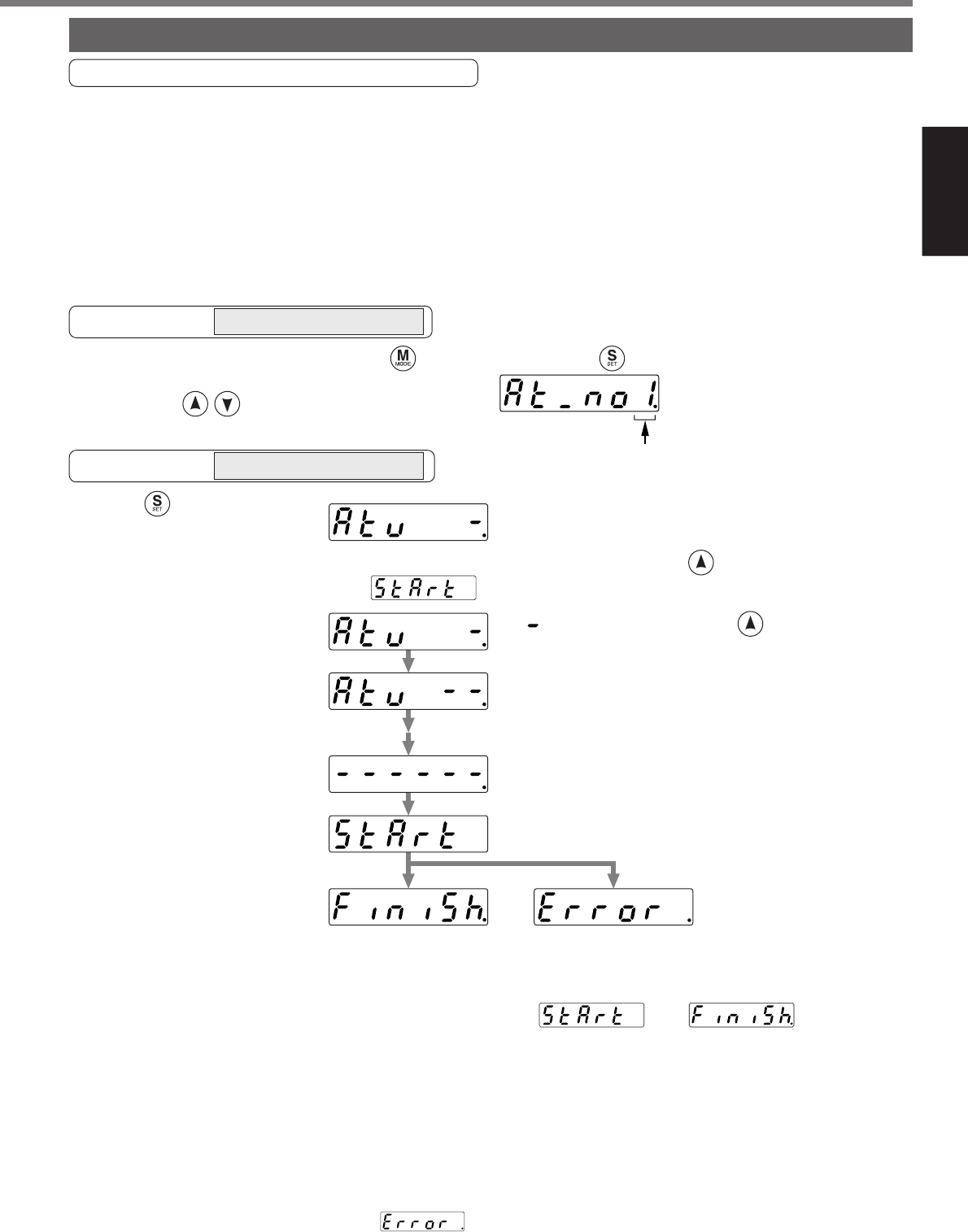
71
[Preparation]
Preparation
After setting up tuning, return to SELECT DISPLAY, referring to structure of each mode (P.60 and 61).
<Remarks>
Don't disconnect the console from the driver between and
Should the connector is pulled out, insert it again and repeat the procedures from the beginning.
<Note> If the following status occurs during the tuning action, the tuning error occurs.
(1)
During the tuning action, 1) when an error occurs, 2) when turned to Servo-OFF, 3) even the deviation counter
is cleared, 4) when the tuning is actuated close to the limit switch and 5) when the main power is shut off.
(2) When the output torque is saturated because the inertia or load is too large.
(3) When the tuning can not be executed well causing oscillation.
If the tuning error occurs, value of each gain returns to the previous value before the tuning. The
driver does not trip except error occurrence. Depending on the load, the driver might oscillate without
becoming tuning error. (not showing )Extra attention should be paid to secure the safety.
Starting of the motor
Tuning finishes.
Tuning errorTuning completes
machine stiffness No.
(1 to 9, A (10) to F (15))
<Note>
For machine
stiffness No.,
refer to P.238.
<Note>
To prevent the loss of
gain value due to the
power shutdown, write
into EEPROM.
Press to make
EXECUTION DISPLAY to
Starting from the initial LED status, press three time after pressing ,
then brings the display of normal
auto-gain tuning,
then press
to select the machine
stiffness No.
After inhibiting command input, and during Servo-On status,keep pressing until
Console (LED) display changes to .
“ ” increases by pressing (approx. 5sec)
as the left fig. shows.
Auto-Gain Tuning Mode
Normal Mode Auto-Gain Tuning Screen
<Remarks>
•For details of normal auto-gain tuning, refer to P.236, "Normal Auto-Gain Tuning" of Adjustment. Pay a
special attention to applicable range and cautions.
• The motor will be driven in a preset pattern by the driver in normal auto-gain tuning mode. You can change
this pattern with Pr25 (Setup of action at normal auto-gain tuning), however, shift the load to where the
operation in this pattern may not cause any trouble, then execute this tuning.
• Depending on the load, oscillation may occur after the tuning. In order to secure the safety, use the
protective functions of Pr26 (Setup of software limit), Pr70 (Setup of excess position deviation) or Pr73
(Setup of over-speed level).
Operation at SELECTION display
Operation at EXECUTION display


















